I am trying to build a small battery powered device containing a servo. I would like to be able to turn off the servo to save battery life. I have read previously that MOSFETs can be used to do this, but I am having trouble finding example circuits that are detailed enough (missing resistor values with no way to calculate them) and to be honest I am not too sure what sort of circuit I am looking for (I have never used any FETs before). Can someone please give me a nudge in the right direction?
potentially relevant info:
- code running on a mega88 @ 3.3V
- 4.8-6V servo connected straight into the 6V battery pack (I would like to change this)
 :
: